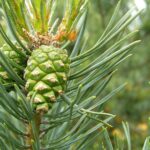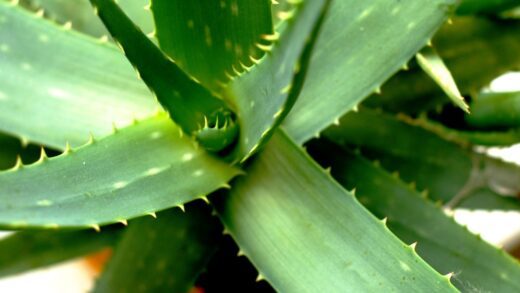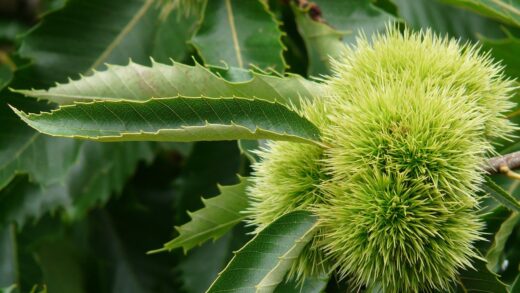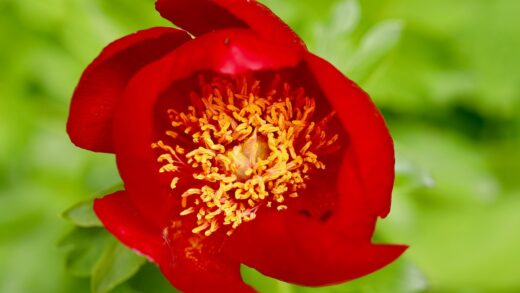The Golden Rain Tree, known scientifically as Koelreuteria paniculata, is a remarkably resilient and visually stunning ornamental tree, prized for its adaptability and four-season interest. Its successful cultivation hinges on understanding its fundamental requirements, which are surprisingly modest, making it an excellent choice for a wide range of landscapes and gardening skill levels. This tree thrives in conditions that mimic its native habitat in eastern Asia, preferring open, sunny locations and demonstrating a high tolerance for urban pollution and difficult soils. Proper care begins with thoughtful placement and continues with consistent, but not intensive, maintenance throughout its life, ensuring the development of a strong structure and a spectacular annual display of flowers, seed pods, and autumn color. Ultimately, providing the right foundational care will reward the gardener with a fast-growing, medium-sized tree that offers decades of beauty with minimal intervention.
Understanding the inherent characteristics of the Golden Rain Tree is the first step toward providing excellent care for this specimen. It is a deciduous tree that typically reaches a height and spread of about 9 to 12 meters, developing a rounded, umbrella-like canopy that provides dappled shade. Its tolerance for a variety of conditions is one of its most celebrated attributes, as it can withstand drought, heat, wind, and alkaline soils once established. This resilience makes it suitable for challenging urban environments, such as street-side plantings or parks, where other trees might struggle to survive. Acknowledging its growth habit and ultimate size is crucial for preventing future conflicts with buildings, power lines, or other plants in the landscape.
The tree’s seasonal cycle offers a continuous display, which informs the timing of care practices. In mid-summer, it produces large, upright panicles of fragrant, yellow flowers that are a valuable nectar source for bees and other pollinators. These flowers give way to unique, papery, lantern-like seed capsules that change from green to a pinkish-tan hue and persist into the autumn, often creating a rattling sound in the wind. The pinnately compound leaves emerge with a pinkish-bronze tint in spring, mature to a bright green in summer, and culminate in a beautiful, though sometimes variable, yellow fall color. Recognizing these phenological stages helps in timing pruning, fertilization, and monitoring for potential issues.
Hardiness is a key factor in the successful long-term care of the Golden Rain Tree, as it dictates the geographical locations where it can be grown without significant winter protection. This species is generally hardy in USDA zones 5 through 9, meaning it can tolerate minimum winter temperatures ranging from -29°C to -7°C. While it is quite tough, young trees planted at the colder end of this range may benefit from some winter protection during their first few years to prevent dieback. Understanding the specific microclimate of the planting site is also important; a location sheltered from harsh winter winds can significantly improve its chances of thriving in a borderline climate zone.
Optimal soil conditions and location
Selecting the proper location is arguably the most critical decision in the care of a Golden Rain Tree, as a well-chosen site will minimize future maintenance and maximize the tree’s health and beauty. This species demands full sun exposure, requiring at least six to eight hours of direct sunlight per day to produce the most abundant flowers and develop a dense, symmetrical canopy. A location on the south or west side of a property is often ideal. Furthermore, consideration must be given to its mature size, ensuring there is ample space for both its branches to spread and its root system to expand without interfering with foundations, sidewalks, or underground utilities.
The Golden Rain Tree is famously adaptable to a wide range of soil types, from sandy loams to heavier clays, but it performs best in well-drained soil. Poor drainage is one of the few conditions it does not tolerate well, as waterlogged roots can lead to root rot and other fatal diseases. Before planting, it is wise to assess the soil’s drainage capacity by digging a hole and observing how quickly water percolates through. If the soil is heavy clay and retains water for extended periods, amending it with organic matter like compost or pine bark can improve its structure and aeration, creating a more hospitable environment for the tree’s root system.
While tolerant of a broad pH range, the Golden Rain Tree grows optimally in soils that are neutral to slightly alkaline. It is an excellent choice for landscapes with alkaline soils where acid-loving plants like rhododendrons or azaleas would fail. There is typically no need to amend the soil to adjust its pH for this tree unless the conditions are extremely acidic. A simple soil test can provide valuable information about the existing pH and nutrient levels, allowing for any necessary, minor adjustments to be made prior to planting, thereby setting the tree up for success from the very beginning.
When considering the physical location, think about the tree’s role in the larger landscape design and its interaction with the surrounding environment. Its high tolerance for air pollution makes it a superb street tree, while its deep root system is generally not aggressive, reducing the risk of damage to nearby pavements. However, it is known to self-seed, sometimes prolifically in certain climates, so it may not be suitable for planting near pristine natural areas where it could become invasive. In a garden setting, it can serve as a magnificent standalone specimen, provide light shade for a patio, or be incorporated into a mixed border with other drought-tolerant plants.
Watering and moisture management
Proper watering practices are most critical during the tree’s establishment period, which typically encompasses the first two to three years after planting. During this time, the root system is expanding into the native soil, and consistent moisture is essential for its survival and vigorous growth. A newly planted Golden Rain Tree should be watered deeply at the time of planting and then receive regular irrigation throughout its first few growing seasons. The general rule is to provide a slow, deep soaking of the root ball and surrounding area once or twice a week, especially during hot, dry weather. The goal is to keep the soil consistently moist but never saturated, which would deprive the roots of oxygen.
Once a Golden Rain Tree is well-established, its water needs decrease dramatically, as it develops a deep and efficient root system that makes it highly drought-tolerant. Mature trees often require little to no supplemental irrigation in climates that receive regular rainfall. In arid regions or during periods of extended drought, however, occasional deep watering will help maintain its health and prevent stress, which can manifest as leaf scorch or premature leaf drop. Instead of frequent, shallow watering, it is far more effective to provide a thorough soaking every few weeks, allowing the water to penetrate deep into the soil profile and encourage deeper root growth.
Monitoring the tree and the soil is the most reliable way to determine when to water. Rather than adhering to a strict schedule, check the soil moisture at a depth of several inches; if it feels dry to the touch, it is time to water. Observe the tree’s foliage for signs of water stress, such as wilting or a slight curling of the leaves, which indicate that irrigation is needed. It is important to water at the base of the tree, over the root zone, and to avoid spraying the foliage, as wet leaves can be more susceptible to fungal diseases, particularly in humid conditions.
The time of day when watering occurs can also impact its effectiveness and the tree’s health. Watering early in the morning is the most efficient method, as it minimizes water loss due to evaporation and allows the foliage to dry completely before nightfall. Evening watering can sometimes be acceptable, but if the leaves remain wet overnight, it can create a favorable environment for the development of fungal pathogens like powdery mildew or leaf spot. Using a soaker hose or a drip irrigation system is an excellent way to deliver water directly to the root zone slowly and efficiently, conserving water and promoting a healthy tree.
Nutrient management and feeding
The Golden Rain Tree is not a heavy feeder and generally performs well in average to moderately fertile soils without the need for a rigorous fertilization program. In many landscape situations, particularly where the tree is planted in a lawn that is regularly fertilized, it will obtain sufficient nutrients from the surrounding environment. Over-fertilization can be more detrimental than under-fertilization, as excessive nitrogen can stimulate weak, leggy growth that is more susceptible to wind damage and may inhibit flower production. Therefore, the first step in nutrient management should always be to assess the existing soil quality.
If the tree is growing in very poor, sandy, or nutrient-deficient soil, or if it shows signs of a nutrient deficiency such as pale leaves (chlorosis) or stunted growth, a light application of fertilizer can be beneficial. A soil test is the most accurate way to determine which nutrients are lacking, but in its absence, a balanced, slow-release granular fertilizer is a safe choice. Formulations such as 10-10-10 or 5-10-5 provide an equal or balanced ratio of nitrogen (N), phosphorus (P), and potassium (K), which support overall tree health without promoting excessive vegetative growth at the expense of flowers.
The timing of fertilizer application is crucial for it to be effective. The best time to feed a Golden Rain Tree is in the early spring, just as new growth begins to emerge. This provides the tree with the necessary nutrients to support the development of its foliage, shoots, and, subsequently, its summer flowers. A single application in the spring is typically sufficient for the entire year. It is important to avoid fertilizing late in the summer or in the autumn, as this can encourage a flush of new growth that will not have time to harden off before the first frost, making it vulnerable to winter injury.
When applying fertilizer, it is essential to follow the product’s instructions carefully to avoid burning the tree’s roots. Granular fertilizers should be spread evenly over the soil surface, starting from about 30 centimeters away from the trunk and extending out to the dripline (the edge of the canopy) and slightly beyond. After application, the fertilizer should be lightly raked into the top layer of soil and then watered in thoroughly. This ensures that the nutrients are dissolved and carried down into the root zone where they can be absorbed by the tree.
Pruning for health and structure
Pruning is an important aspect of long-term care for the Golden Rain Tree, primarily aimed at establishing a strong structure in young trees and maintaining the health and safety of mature specimens. The tree has a tendency to develop low-hanging branches and multiple competing leaders, which can result in a weak structure that is susceptible to breaking in storms. Therefore, the main goals of pruning are to remove dead, damaged, or diseased wood, improve air circulation through the canopy, and create a clear, strong central trunk with well-spaced scaffold branches. Proper pruning enhances both the tree’s appearance and its longevity.
The best time to perform major structural pruning on a Golden Rain Tree is during its dormant season, in the late winter or very early spring before the new leaves emerge. Pruning during dormancy minimizes stress on the tree and reduces the risk of sap bleeding from the cuts. It also allows for a clear view of the branch structure without the obstruction of foliage, making it easier to identify and remove problematic limbs. Minor pruning, such as the removal of small dead twigs or suckers, can be done at any time of the year without causing harm to the tree.
For young trees, the focus of pruning should be on training and structural development. The goal is to establish a single, dominant central leader and to remove or shorten any competing leaders. Scaffold branches—the main branches that form the tree’s framework—should be selected for good spacing both vertically and radially around the trunk. Branches with narrow, V-shaped crotches should be removed in favor of those with stronger, U-shaped attachments. It is also important to gradually raise the canopy by removing the lowest branches to provide clearance for pedestrians or mowing, depending on its location.
When pruning mature trees, the focus shifts from training to maintenance. The primary task is to inspect the canopy for and remove any branches that are dead, broken, or showing signs of disease, such as cankers. It is also beneficial to thin out areas where branches are crossing, rubbing against each other, or are overly crowded, as this improves light penetration and air movement, which can help reduce the incidence of fungal diseases. It is crucial to use sharp, clean pruning tools and to make proper pruning cuts just outside the branch collar to promote rapid healing and prevent decay.
Long-term monitoring and maintenance
Consistent, long-term monitoring is a cornerstone of responsible tree care and is essential for catching potential problems before they become severe. A regular inspection of your Golden Rain Tree, perhaps on a seasonal basis, allows for the early detection of pests, diseases, or structural issues. In the spring, check for any winter damage and monitor the emergence of new growth. In the summer, look for signs of insect activity or foliar diseases while the tree is in full leaf. In the autumn, assess the fall color and check the developing seed pods, and in the winter, inspect the tree’s structure and bark for any abnormalities.
Applying a layer of organic mulch around the base of the tree is one of the most beneficial long-term maintenance practices. A 5 to 10-centimeter layer of wood chips, pine bark, or compost spread over the root zone (but kept away from the immediate trunk) offers numerous advantages. Mulch helps to conserve soil moisture by reducing evaporation, suppresses the growth of competing weeds, and moderates soil temperature, protecting the roots from extreme heat in the summer and cold in the winter. As the organic matter breaks down, it also gradually enriches the soil, improving its structure and fertility over time.
While generally pest and disease resistant, the Golden Rain Tree is not immune to problems, and vigilance is key. Periodically check the leaves, stems, and trunk for common issues like aphids, scale insects, or the goldenrain tree bug, which can sometimes appear in large numbers. Fungal diseases such as verticillium wilt, leaf spot, or canker can also occur, particularly if the tree is stressed or wounded. Early identification allows for timely intervention, which might include horticultural oil sprays for insects or the pruning of diseased branches to prevent the spread of a pathogen.
Finally, long-term care involves adapting to the tree’s changing needs as it matures and responding to environmental conditions. A young tree requires protection and regular watering, while a mature tree needs more focus on structural integrity and monitoring for age-related issues. Be mindful of changes in the surrounding landscape, such as new construction or the growth of neighboring trees, which could alter the light or water availability for your Golden Rain Tree. By providing this ongoing stewardship, you ensure that this beautiful ornamental tree remains a healthy and valuable asset in your landscape for many years.
📷 Flickr / Szerző: Plant Image Library / Licence: CC BY-SA 2.0




















